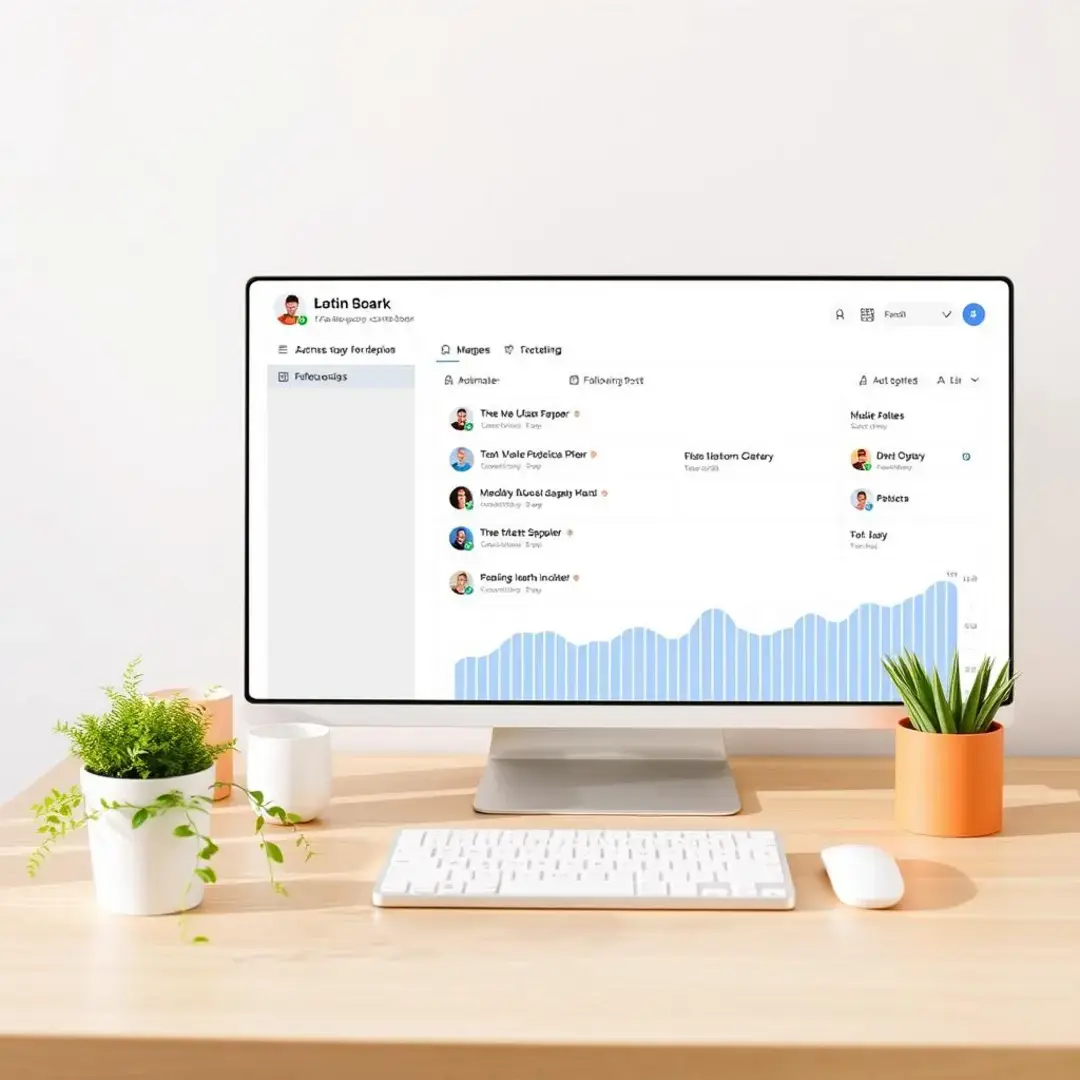How to post to multiple social media channels?
Understanding the complexities of multi-platform posting

In today’s digital landscape, maintaining a presence across multiple social media channels is crucial for businesses aiming to maximize their reach. However, the complexities involved in managing various platforms can pose significant challenges. Different audiences, unique platform features, and varying content preferences require careful navigation to ensure a cohesive strategy.
The challenges of maintaining a consistent brand voice
Building a coherent brand identity across multiple platforms is essential, but it is fraught with challenges. You want to maintain your brand voice while also adapting to the unique characteristics of each platform. This can lead to confusion if not managed properly, as your followers may experience discrepancies in tone and messaging.
Each social media platform features distinct demographics and user behaviors that affect how content is received. For instance, what resonates on Instagram may not work on LinkedIn. Understanding these nuances is pivotal to capturing the attention of your audience on each platform.
Every platform has its preferred format, be it images, videos, or text-heavy posts. Adjusting to these technical requirements can be cumbersome but is necessary for maximizing engagement. Investing time into learning the ideal formats can greatly enhance your chances of standing out amid the digital noise.
Strategic content planning for diverse platforms
A strategic approach is key to effective multi-channel posting. Developing a comprehensive content plan allows for consistent messaging while accommodating the unique requirements of each platform. This foresight is essential for staying organized and ensuring that your audience receives high-quality content tailored specifically for them.
A content calendar serves as a roadmap, allowing marketers to visualize their posting schedule across all platforms. By plotting out content well in advance, businesses can ensure they maintain a regular posting schedule, leading to higher engagement rates. A unified calendar aids in avoiding overlaps and helps streamline communication within teams.
While a unified theme is important, it is equally crucial to have tailored strategies for each platform. Crafting unique posts tailored to the interests and behaviors of users on each channel can amplify your reach. This strategic dissemination ensures that no potential audience is overlooked while keeping content fresh and engaging across the board.
Leveraging automation tools for efficient posting

In an age where time is of the essence, automation tools have become indispensable for marketers. These platforms allow businesses to efficiently manage their content distribution while saving valuable time. When leveraged correctly, these tools can elevate an otherwise tedious process into a streamlined activity that effectively bolsters productivity.
Exploring popular social media management platforms
Many social media management tools offer various functionalities, catering to the diverse needs of marketers. Exploring these options can help identify the best fit for your organization, and it all starts with understanding what each tool brings to the table.
Buffer is a highly regarded tool known for its user-friendly interface that allows users to easily schedule posts on multiple platforms. It also provides excellent analytics so businesses can gauge the performance of their content, helping to inform future strategies.
Hootsuite stands out for its robust collaboration features, making it a popular choice for teams. Its monitoring capabilities also allow businesses to track conversations and mentions, ensuring that no piece of feedback goes unnoticed. This interactive approach facilitates engagement with followers in a timely manner.
SproutSocial offers powerful reporting tools that provide valuable insights into a brand’s social media performance. Its advocacy features allow brands to engage their audiences actively, transforming followers into brand advocates over time. Harnessing this tool can significantly improve overall engagement and visibility.
Automating content distribution without losing the personal touch
While automation promotes efficiency, it is essential to maintain the personal touch that resonates with audiences. Finding the right balance between automation and personalization can enhance user experiences without sacrificing authenticity.
Automating your posting schedule can free up time to engage with your audience directly. By planning posts in advance, marketers can ensure their content goes live at optimal times, allowing for greater visibility and engagement.
RSS feeds can serve as a valuable resource for aggregating content. By setting up feeds from relevant sources, marketers can consistently share high-quality material without continuously searching for new articles, making it easier to share valuable content with followers.
Advanced techniques for maximizing reach and engagement

Once you have a solid foundation for multi-platform posting, exploring advanced techniques can take your strategy to the next level. Strategies such as cross-promotion and performance analysis can significantly enhance your social media presence.
Cross-promotion strategies for amplified visibility
Cross-promotion can help you bridge the gap between different social media channels, driving traffic from one platform to another. This approach not only increases visibility but also encourages diverse engagement across platforms.
Linking profiles can create seamless interactions between platforms. By encouraging followers from one channel to check out your other pages, you’re increasing the chances of engagement and reach across your brand’s digital footprint.
Contests and giveaways are powerful tools for boosting engagement and drawing new followers. Running a campaign that spans multiple platforms can create excitement and drive participation, nurturing a sense of community around your brand.
Analyzing performance and refining your multi-platform strategy
Regular performance analysis is key to adjusting and refining your multi-platform strategy. By consistently tracking metrics, businesses can identify trends that inform future content creation and scheduling.
Important metrics such as engagement rates, shares, and click-through rates provide critical insights into what works. Understanding these analytics allows you to pivot your strategies in real time, addressing audience preferences proactively.
Utilizing data-driven insights can inform your content strategy and posting schedules, ensuring that your audience receives the most relevant posts at the most effective times. This not only enhances engagement but also fosters a more loyal following.
Staying ahead of the curve: future trends in multi-platform posting

As social media platforms continually evolve, so too must our strategies for posting to multiple channels. Staying ahead of trends is essential to remaining relevant in an ever-changing digital landscape.
The rise of AI-powered social media management
AI technology is rapidly changing the landscape of social media management, offering innovative solutions for marketers. Companies that embrace these advancements can better tailor their strategies and optimize their content distribution.
Predictive analytics can provide valuable insights that help businesses forecast trends and audience behavior. By leveraging this technology, companies can craft more effective content strategies tailored to their target demographic.
Automation in content creation is another emerging trend to watch. With advanced AI tools capable of generating and curating content, businesses can maintain a steady stream of fresh material while freeing up time for strategic planning and engagement efforts.
Adapting to evolving social media algorithms and best practices
As algorithms change, staying informed and adapting is vital for continued success. Engaging with updates from platforms can provide insights that guide your content strategy and enhance visibility.
Regularly following updates from social media platforms helps marketers understand changes that may affect their strategies. From algorithm changes to features, staying current ensures that your practices remain effective in reaching your audience.
Experimentation is essential to finding what resonates with your audience. By not hesitating to try new features or strategies, businesses can uncover unique ways to engage with their followers and stand out in a crowded digital space.












